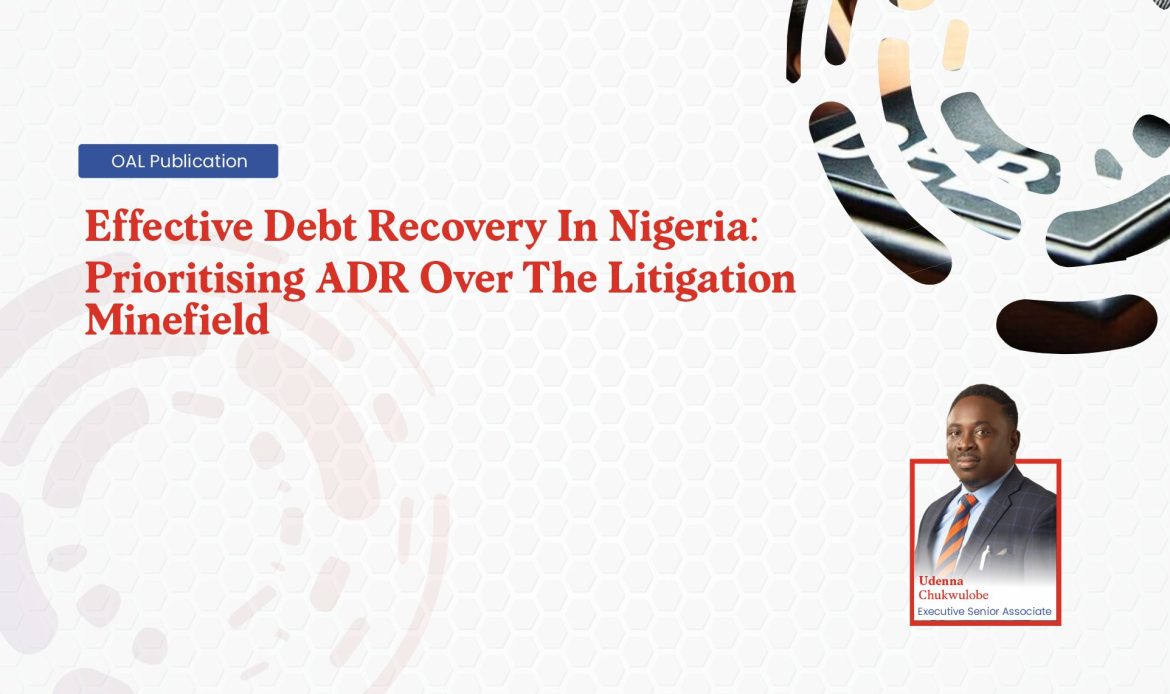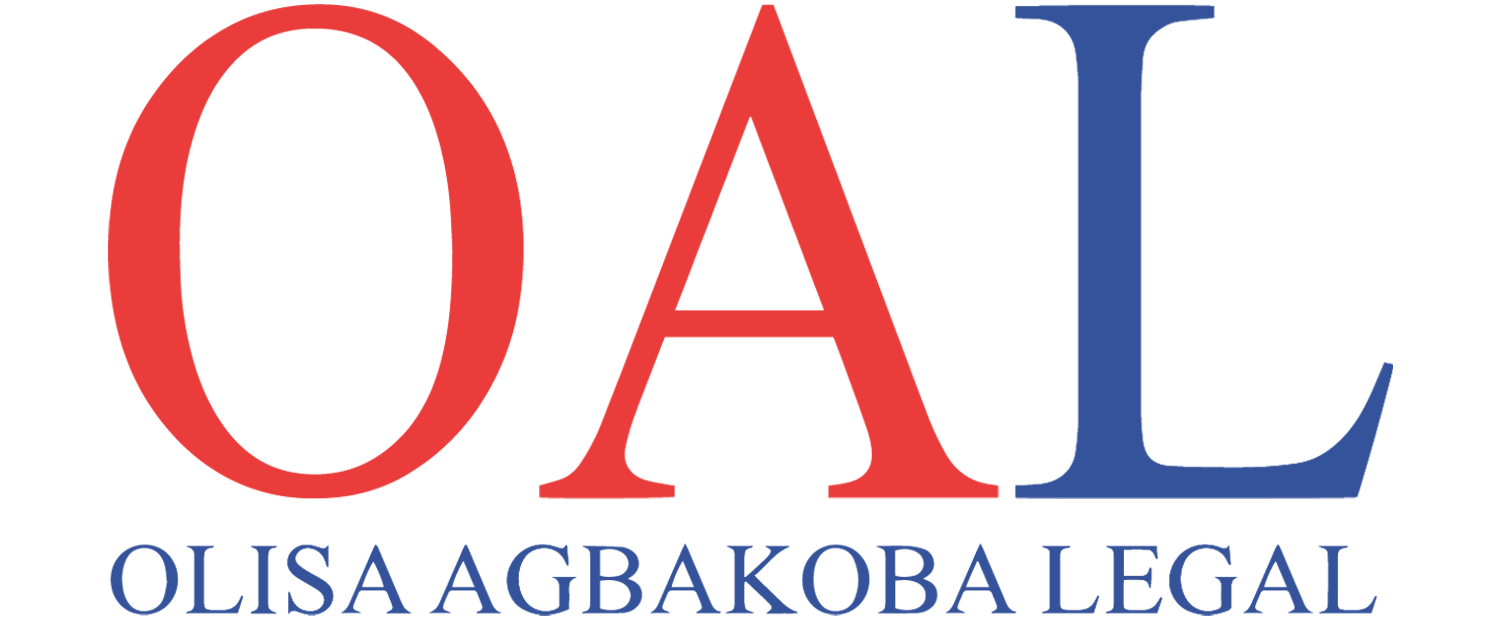
Effective Debt Recovery In Nigeria: Prioritising ADR Over The Litigation Minefield
Abstract
Debt recovery in Nigeria remains a complex and multifaceted challenge. While litigation has often been viewed as the principal instrument for compelling repayment, contemporary experience show that litigation is increasingly weaponised by debtors to delay, complicate, and frustrate payments. This article contends that alternative dispute resolution (ADR), particularly negotiation and mediation, should be the preferred initial mechanism for resolving indebtedness, with litigation reserved only for situations where ADR proves unworkable. The article further argues that the greatest obstacle to debt recovery lies not in the courtroom but within the lending institutions themselves, where poor loan documentation, insider-abuse, policy violations, proxy lending, and fraudulent credit practices compromise the enforceability of credit obligations long before default occurs. Because improperly documented loans weaken both ADR outcomes and litigation results, effective recovery begins at loan origination, requiring strict credit-risk assessment, transparent internal governance, and meticulous documentation. Finally, the article examines the statutory enforcement mechanisms in Nigeria and highlights judicial authorities that emphasise the distinction between obtaining a judgment and enforcing one, a distinction that remains central to understanding debt recovery in the Nigerian context.
- Introduction
“Enforcement of judgments in Nigeria is suffering from [a] labyrinth of legislative, administrative, judicial and legal impediments. It is very unfortunate that the process of enforcing judgements in Nigeria is more arduous and tasking than the process of obtaining judgements” [i]
The practice of debt recovery in Nigeria exists at a difficult intersection of commercial expectations, institutional weaknesses, and systemic limitations in the justice system. Creditors frequently assume that litigation provides a decisive path for enforcing financial obligations. Yet the Nigerian experience proves that litigation, far from offering finality, often becomes a site of strategic delay. Debtors routinely exploit procedural guardrails, adjournments, interlocutory objections, applications for stay, and even interlocutory appeals, to impede progress and prolong repayment. These manoeuvres significantly extend recovery timelines, increase costs, and erode the commercial value of the underlying credit.
However, a deeper structural problem precedes these courtroom difficulties: the defective nature of loan documentation and credit administration within many Nigerian financial institutions. It is common for loans to be advanced without perfected security interests, and clear collateral schedules, and no enforceable guarantees, and sometimes, without any documentation capable of surviving judicial scrutiny. Even more troubling are institutional practices where senior bank officials circumvent credit policies, facilitate loans to themselves using proxies, approve facilities for friends and associates, or deliberately ignore due-diligence requirements. These lapses compromise enforceability at inception, leaving creditors with technically defective instruments that are easily challenged in court. Thus, the challenge of debt recovery begins not at the point of default but at the point of loan creation.
These realities underscore the need for a deliberate shift from litigation-driven strategies to more nuanced, commercially grounded approaches. At the centre of this recalibration lies alternative dispute resolution (ADR), which offers flexibility and confidentiality not available in the courtroom.
- The Primacy of Alternative Dispute Resolution in Debt Recovery
ADR has become indispensable in resolving debt disputes in Nigeria, particularly because of the fluid nature of commercial indebtedness and the institutional lapses that often undermine strict legal enforcement. Negotiation, Conciliation and mediation allow parties to engage in candid assessments of the debtor’s financial capacity, explore flexible repayment plans, restructure loan terms, modify interest rates, and review collateral arrangements. This is known in insolvency practice as the business rescue strategy with an underlying concept of win-win rather than litigation’s winner take all model. These options cannot be imposed by a court bound by pleadings, procedural rules, and statutory limits.
ADR is especially valuable where documentation is weak or defective. In many instances, the creditor’s internal weaknesses, irregular loan approvals, unperfected collateral, unsigned or unstamped guarantees, or policy-violating credit memoranda, would be exposed in litigation and exploited by the debtor’s counsel. Mediation offers a confidential forum within which the creditor can salvage obligations without the embarrassment and evidentiary consequences of exposing such institutional failings in court. Institutions such as the Lagos Multi-Door Courthouse and the Institute of Chartered Mediators and Conciliators (ICMC) have played central roles in providing structured, professional mediation platforms for commercial disputes.
More importantly, ADR encourages debtor buy-in. Debtors are more likely to adhere to repayment terms that they helped negotiate, thereby reducing the risk of subsequent disputes and enforcement actions. For overburdened courts, ADR also alleviates congestion and accelerates resolution. For creditors, ADR reduces litigation costs, preserves relationships, and avoids the reputational risks of public disputes.
Nevertheless, ADR is not infallible. Where the debtor refuses to engage in good faith, or where negotiations collapse due to persistent default, litigation becomes necessary.
- Litigation as a Measure of Last Resort
Litigation becomes the inevitable recourse when ADR fails. Yet litigation must be approached with caution, as it marks the beginning of a long and often arduous and unpredictable process. The role of the court is to adjudicate rights, not to enforce them, and Nigerian jurisprudence has established a big gap between obtaining judgment and enforcement. These two concepts are poles apart, and it is not unusual to span 10 years.
Debtors frequently exploit this gap. Litigation is often used not as a neutral forum for dispute resolution but as a tactical shield. In Central Bank of Nigeria v. Ochife & Ors[ii], the Supreme Court engaged complex procedural questions surrounding garnishee proceedings, particularly the requirement of Attorney-General’s consent under Section 84 of the Sheriffs and Civil Process Act. The decision unsettled expectations regarding the speed and certainty of garnishee enforcement and revealed how procedural technicalities can be weaponised to frustrate recovery. Likewise, in Oboh & Anor v. Nigeria Football League Ltd[iii], the Supreme Court reaffirmed the procedural hurdles inherent in garnishee applications, demonstrating that even after judgment, significant challenges remain.
Thus, while litigation is sometimes unavoidable, it must never be assumed to be quick, predictable, or automatically effective.
- Bridging the Gap Between Judgment and Enforcement
A judgment in favour of the creditor is not the culmination of debt recovery. It is merely a declaration of entitlement. Nigerian law provides several mechanisms for actualising that entitlement, chief among them are garnishee proceedings, writs of fieri facias, judgment summons, and sequestration. Garnishee proceedings, governed by Sections 83–92 of the Sheriffs and Civil Process Act, remain the most efficient tool for attaching liquid assets. In Union Bank v. Boney Marcus Industries Ltd[iv], the Supreme Court described garnishee proceedings as a means of attaching debts owed to the judgment debtor by a third party. Further, in Zenith Bank Plc v. Arthur John[v], the Supreme Court held that once a garnishee order absolute is made, it becomes a fully executed judgment, incapable of being stayed.
Yet even the most robust enforcement mechanisms can falter when the original loan documentation is defective. Beyond documentation-related vulnerabilities, debt recovery is often constrained by broader systemic and commercial challenges. A primary obstacle is the difficulty of accurately identifying and locating debtors. Defaults are frequently compounded by outdated or inaccurate contact information, deliberate concealment by debtors, or poor record-keeping by creditors, leading to protracted or misdirected recovery efforts. Institutions must therefore implement rigorous data verification procedures and maintain continuously updated debtor profiles.
Debtors’ genuine financial distress also constitutes a major impediment to recovery. Economic downturns, business failures, or personal hardship can significantly impair repayment capacity. Sustainable recovery, therefore, requires creditors to adopt flexible repayment structures and employ empathetic, negotiation-based strategies.
Legal and regulatory complexities further complicate debt recovery, particularly for creditors operating across multiple jurisdictions or engaging with government agencies. Non-compliance can render transactions void, securities unenforceable, or expose creditors to regulatory sanctions.
Uncooperative debtors present predictable yet significant challenges. Non-responsiveness, deliberate evasion, or baseless disputes can derail recovery timelines, highlighting the critical importance of thorough documentation, comprehensive communication records, and well-structured internal recovery systems.
Courts are similarly cautious in enforcing claims against weakly structured security interests, improperly executed guarantees, ambiguous collateral agreements, or credit approvals tainted by fraud, insider abuse, or procedural irregularities. These weaknesses complicate enforcement, prolong timelines, increase costs, and in some cases, render the entire recovery process ineffective.
- The Centrality of Documentation to Effective Debt Recovery
The most fundamental element of debt recovery, more important than ADR, litigation, or enforcement mechanisms, is proper loan documentation. Without it, the creditor’s legal position is compromised at every stage. Effective credit administration requires meticulous detailing of loan terms, proper identification of borrowers, duly executed and stamped agreements, clear collateral schedules, perfected security interests, enforceable guarantees, credit-risk assessments, and compliance with internal lending policies.
When financial institutions neglect these requirements, whether due to lax oversight, systemic inefficiency, or deliberate insider-abuse, they effectively undermine their ability to recover the debt. Fraudulent lending practices, including proxy borrowing and unauthorised facilities granted by bank officials, not only weaken enforcement but also expose the institution to reputational and regulatory risks. In such circumstances, even the strongest legal tools become ineffective.
Therefore, effective recovery begins, not in court, but at the desk of the loan officer. No amount of litigation strategy can compensate for documentation that is fundamentally flawed.
- Conclusion
Debt recovery in Nigeria demands a strategic, commercially sensitive, and institutionally disciplined approach. Given the procedural and practical pitfalls that characterise litigation, ADR must be prioritised as the principal mechanism for resolving indebtedness. Litigation should be reserved for cases where ADR fails or where the debtor acts in bad faith.
Yet even the most sophisticated ADR or litigation strategy will collapse if the underlying loan documentation is defective. Thus, the true foundation of effective recovery lies in robust loan origination practices, sound credit analysis, strict adherence to lending policies, comprehensive documentation, and transparent internal governance.
Ultimately, creditors who succeed are those who combine preventive diligence, commercial pragmatism, and legal precision. By treating ADR as the first line of engagement, approaching litigation with foresight, and grounding every step-in sound documentation, creditors significantly increase their chances of converting legal rights into actual economic returns.
[i] O. Ayenakin, I. Kolade‑Faseyi & T. Akindejoye, “Enforcement of Judgments in Nigeria: Issues, Law and Challenges” (2021) Global Journal of Politics and Law Research Vol 9, No 7, 1–15.
[ii] (2025) LPELR-80220 (SC).
[iii] (2022) SC.841/2016.
[iv] (2005) 13 NWLR (Pt. 943) 654.
[v] (2015) 2 CLRN 3.
